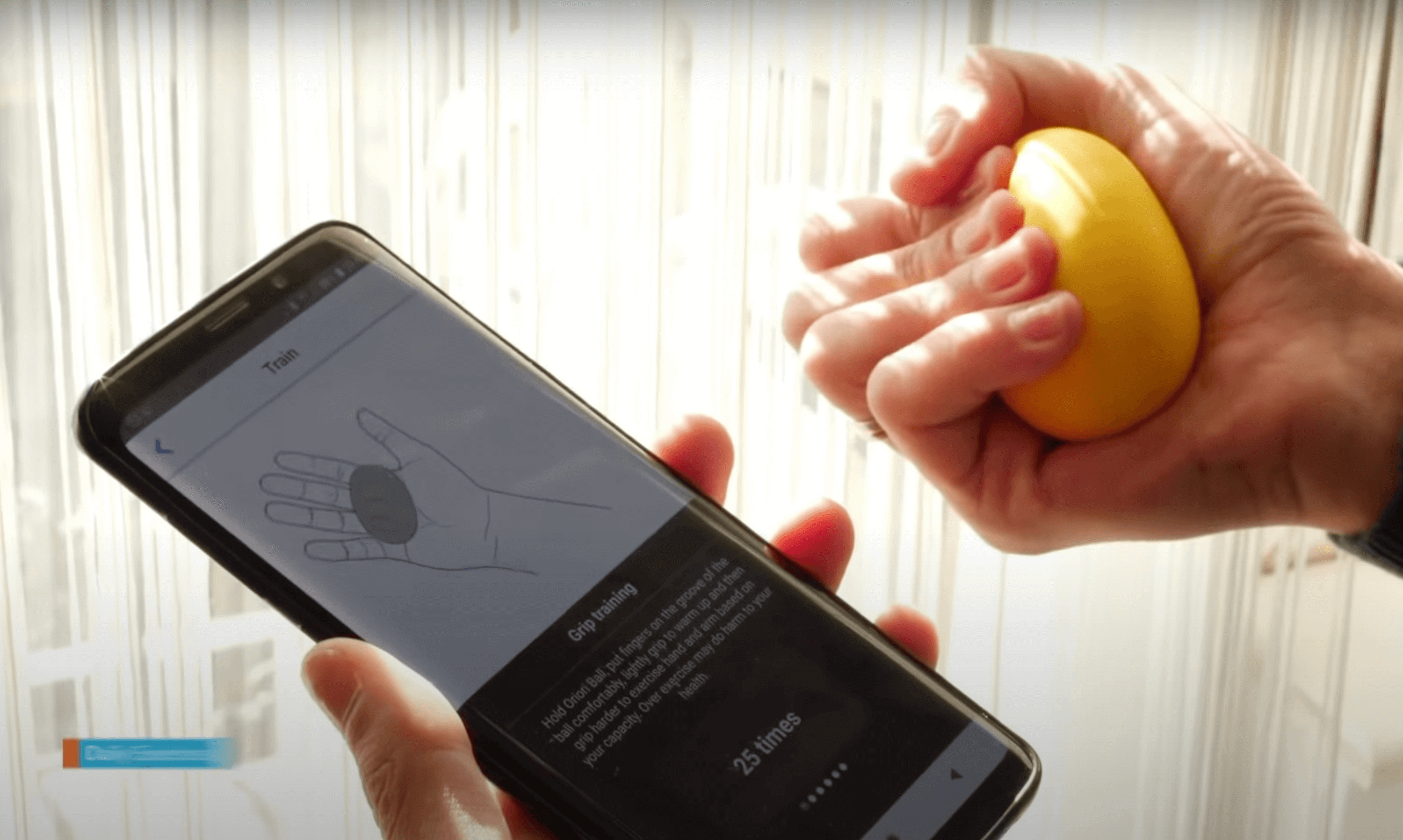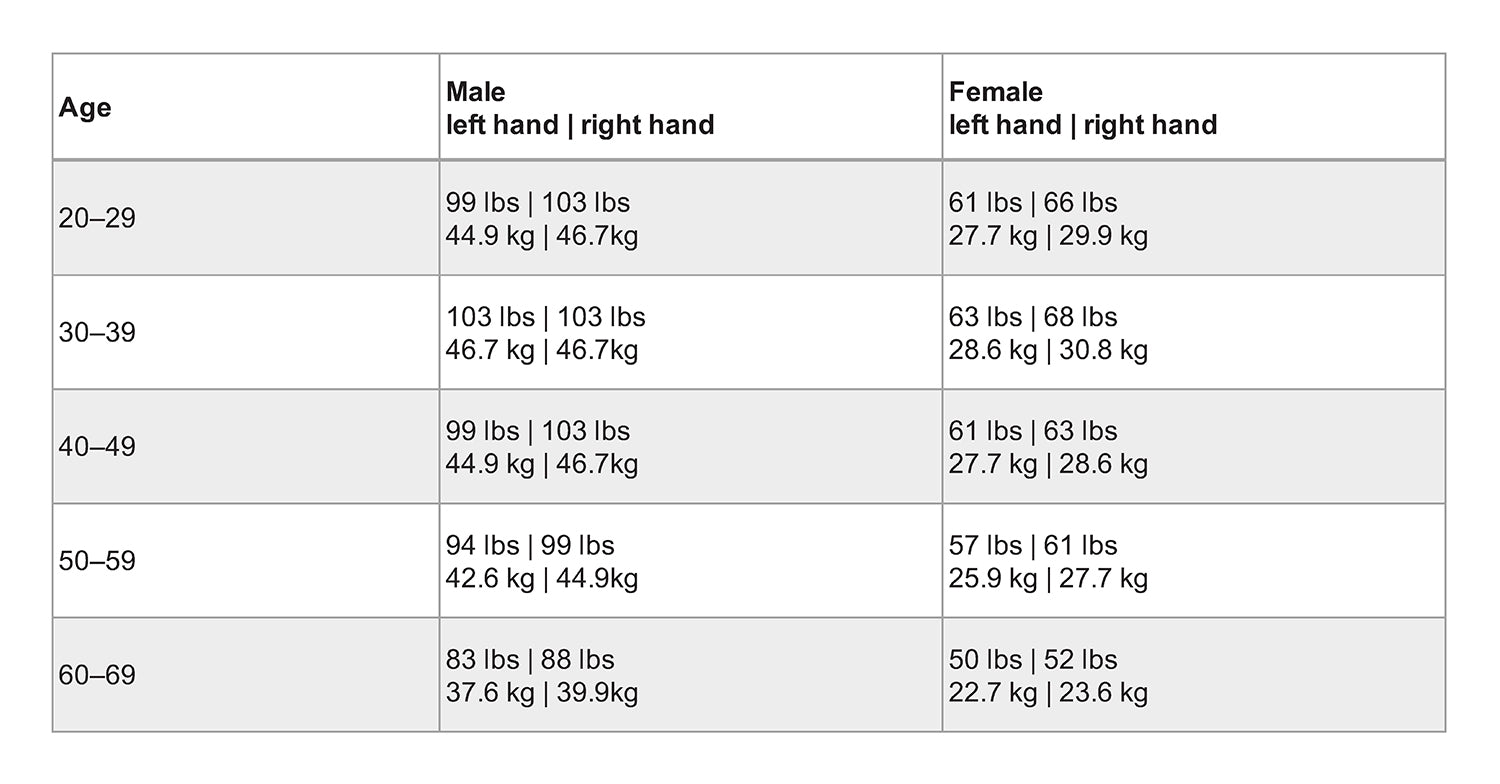Measure both your dominant and non-dominant hands to compare grip strength.
Factors that can influence your grip strength measurement include:
- Your level of energy
- The amount of hand usage during the day
- Your overall health condition, whether you're feeling well or unwell
- Any underlying health conditions that may impact your strength
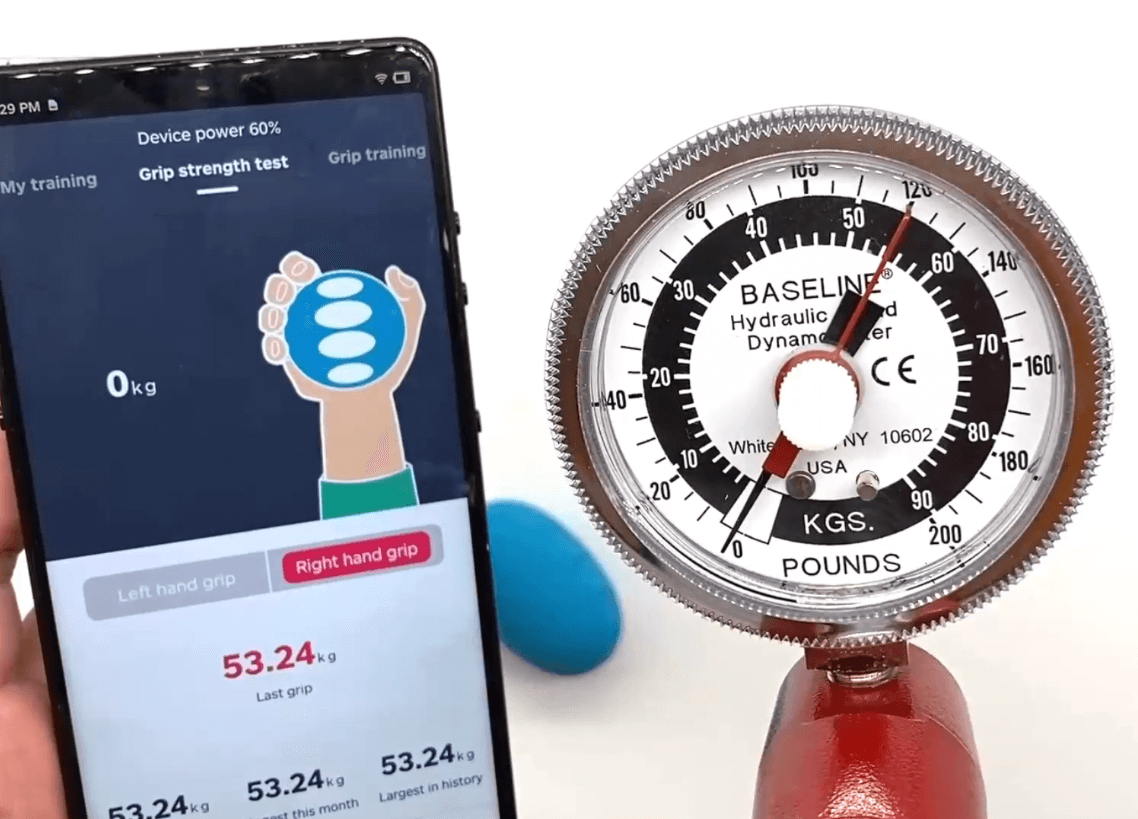
How to measure grip strength?
Grip can be accurately measured using the ORIORI grip ball. It's highly sensitive at measuring hand strength.
Grip strength is highly dependable for providing insights into your overall health, including general fitness, disease and speed of recovery.
3 Major types of grip strength you can improve
It refers to the strength of your grip using both your fingers and palm.
This refers to how firmly you can pinch something between your fingers and thumb.
Support refers to how long you can hold onto something or hang from something.
How to do the training?
-
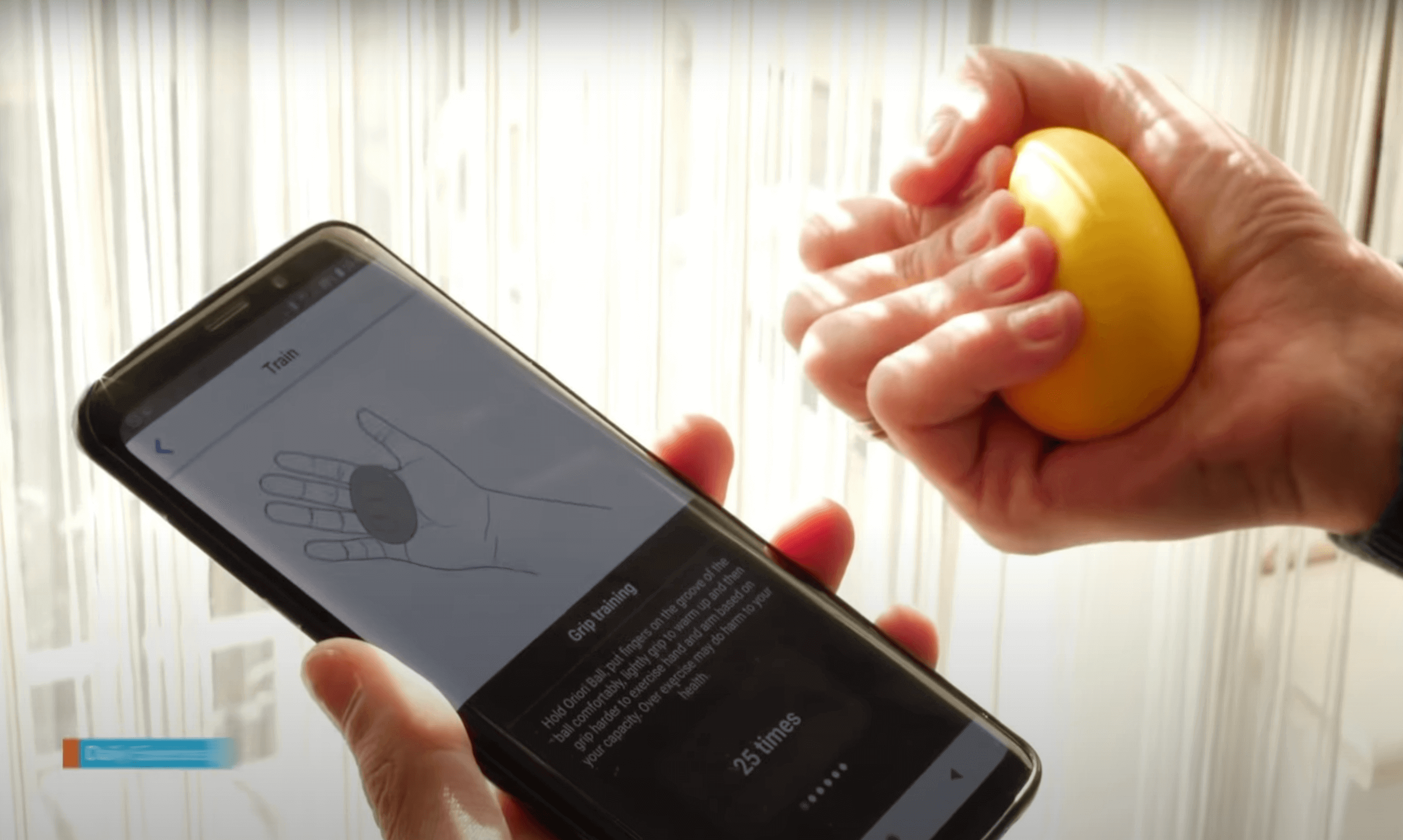
Hand clench
Type of grip: crush
How to do: Squeeze the ball using your fingers but not your thumb.
Sections in ORIORI App:
1) Grip strength testing
2) Grip strength training (long holding/weight target)
3) Grip games (power/speed/reaction)
-

Pinch grip
Type of grip: pinch
How to do: Pinch the ball with different fingers and thumb.
Sections in ORIORI App:
1) Finger training
2) ) Grip games (power/speed/reaction)
-
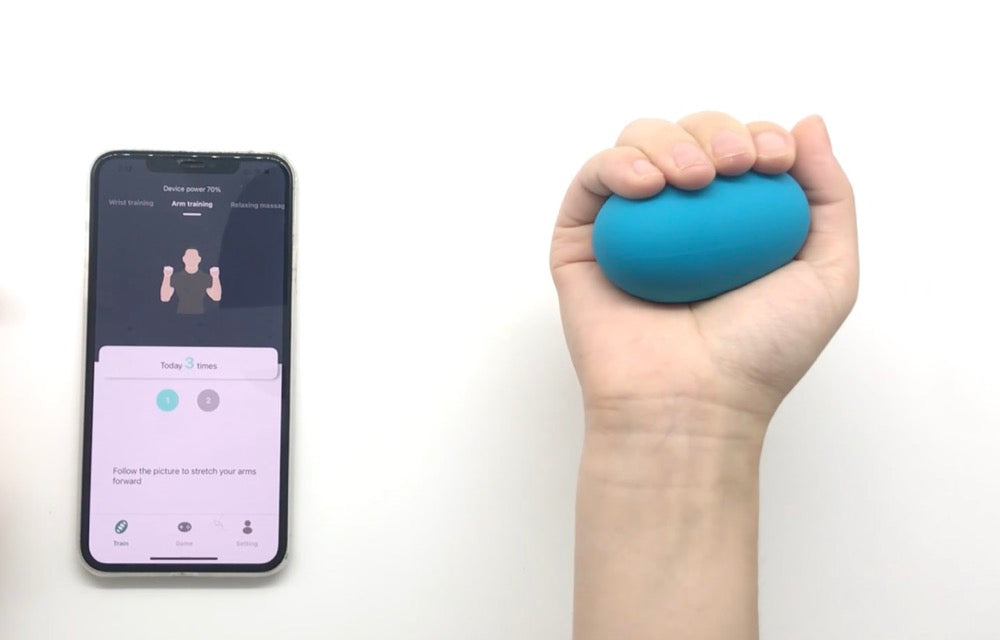
Arm workout
Type of grip: support
How to do: Hold the ball and raise/move the arm.
Sections in ORIORI App:
1) Hammer Curl
2) Motion sensing games (power/speed/reaction)
- Inadequate nutrient intake or malnutrition;
- Disuse/Misuse of hands, such as using computer/phone for long time in same posture;
- Lack of arm workout leading to muscle loss associated with aging;
- Diseases and Conditions: Ganglion cyst, Carpal tunnel syndrome, Cubital tunnel syndrome, Epicondylitis, Pinched nerve, Arthritis in the hands, Sarcopenia, Peripheral neuropathy, Multiple sclerosis, Stroke.


